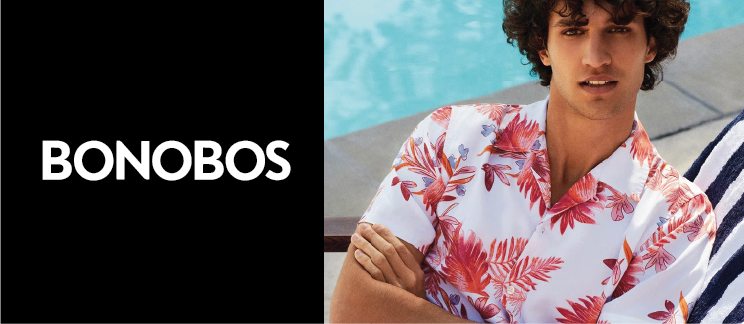A look into the leading e-commerce startups in the world
E-commerce companies are changing the meaning of retail and its scope in today’s world. Many traditional brick-and-mortar merchants have been forced to close stores around the world due to the rise of online companies, but that isn’t to imply that storefronts are dead – rather, most are adapting. Virtual fitting rooms, showrooms, and a plethora of other technologies are transforming the shopping experience, all as part of a customer-centric strategy that caters to the omnichannel shopper.
It’s no secret that the world of business has evolved dramatically in the last 10 years. The rise of experiential marketing and social media has revolutionised the shopping experience, allowing marketers greater access to consumers’ lives and consequently, a better understanding of how people shop online. As a result, e-commerce has emerged as one of the world’s most fertile and fastest-growing businesses, converting the consumer journey into a digital, interactive experience. While many consumers continue to make purchases using their smartphones or laptops, others are turning to smart mirrors for their next major purchases.
As technology evolves, so does the e-commerce business, which already has a significant economic influence. According to statistics, global online-based retail companies produced an equivalent of USD 3.53 trillion in sales in 2019. The industry has shown tremendous potential and has inevitably created one of the nation’s most robust job sectors. Jobs in online-based businesses in the United States are predicted to reach over 450,000 by 2026, according to the United States Bureau of Labor Statistics. Given the sector’s constant evolution, it’s no wonder that the number of e-commerce businesses has risen so dramatically. As the globe goes deeper into the digital age, online entrepreneurs are working to make online shopping increasingly more seamless, safe, and transparent for their customers. These e-commerce companies have managed to throw the retail industry into disarray by creating powerful platforms capable of permanently altering how consumers engage with their favourite businesses. Online or hybrid companies throughout the country are ushering in a new era of online shopping, whether through improving a customer’s online grocery buying experience or by making it simpler for local businesses to interact with their customers.
While we all are pretty much acquainted with the likes of Amazon, Alibaba and others owned by these same e-commerce giants – there are numerous other online-based companies that are sprouting up and thriving. With clearly defined product offerings and business objectives, these companies are going above and beyond consumer expectations by not only introducing entirely new ranges of products but also being able to consistently create customer delight through their processes.
The rise of experiential marketing and social media has revolutionised the shopping experience, allowing marketers greater access to consumers’ lives and consequently, a better understanding of how people shop online.
HERE ARE SOME USPS OF THE TOP E-COMMERCE-DRIVEN COMPANIES THAT HAVE MADE IT BIG
BONOBOS
Redefining menswear
Even if modern menswear has seen its fair share of hideous outfits and unsuitable trends and survived, they have not been able to override one persistent issue that continues to haunt how men dress. Despite expert unanimity on the benefits of well-fitting, comfortable clothing, most men, particularly when it comes to pants, choose to go the other way. It’s not difficult to see why. Men’s trousers, in keeping with current fashion trends, have shrunk to razor-tight cuts in the previous two decades, much to the harm to health and body image.
Parallelly, a slew of unpleasant factors – bad diets, body shaming, growing fashion expenditures, and deceptive garment measurements – have pushed men to cling to generically large and loose pants. Brian Spaly and Andy Dunn noticed a desire for better-fitting men’s pants against this backdrop and they founded Bonobos in 2007 with the intention to produce pants that enhanced the male physique. Bonobos’ trousers, which are neither ‘too tight’ nor ‘too boxy,’ have progressively garnered a cult following and their popularity has been growing exponentially over the years. Bonobos was the first clothing company to embrace the Internet and e-commerce when it first launched – a huge risk for clothing companies at the time. The company’s internet presence was originally sustained by an eclectic mix of in-person selling, word-of-mouth referrals, and online advertising on a young Facebook page.
DOLLAR SHAVE CLUB
The David vs Goliath story
Dollar Shave Club is a firm established in Venice, California that mails razors and other personal grooming supplies to customers. Although the company’s success is largely due to its refreshing brand personality, it is worth noting that the online direct-to-consumer business model created by co-founders Dubin and Levine allowed them to offer razor blades at a much lower price (just a dollar a month plus a two-dollar shipping and handling fee) and provide customers with the convenience of new razor blades right at their doorsteps, routinely, every month. With the company’s low-cost approach and no-fee cancellation policy, they were able to successfully remove barriers to subscription trials.
But that’s not all. Dollar Shave Club’s meteoric rise is also thanks to them solving a massive customer pain point. Encouraging users to change razor blades frequently has been one of the biggest retail hiccups for companies like Procter & Gamble (owners of Gillette). However, subscribers are driven to change blades weekly as a result of the automated monthly replenishment of the four Dollar Shave Club blades, resulting in a rise in the perceived quality of the blades. In a market dominated by physical retailers, e-commerce was a big competitive advantage for Dollar Shave Club. Dubin and Levine established a booming business with a more efficient supply chain that was not reliant on traditional retailers – simply by eliminating the need for middlemen. The supply model used by Dollar Shave Club was also very cost-effective. Blades and other men’s grooming goods are sourced from China and South Korea, and inventory is managed from a single distribution centre. Their internal demand prediction is driven by subscriber demand, hence the only source of unpredictability is the changing number of subscribers. According to Slice Intelligence, Dollar Shave Club was the number-one online razor company in 2015, with a 52.4% market share compared to Gillette’s 21.2%, thanks to their unique supply model.
Online or hybrid companies throughout the country are ushering in a new era of online shopping, whether through improving a customer’s online grocery buying experience or by making it simpler for local businesses to interact with their customers.
Unilever, a consumer goods business, saw the writing on the wall and bought Dollar Shave Club for USD 1 billion in July 2016. The company currently has more than 3.2 million customers in the United States, Canada, the United Kingdom, and Australia, with intentions to enter Europe and Asia.
BIRCHBOX
Beauty in a box
Katia Beauchamp and Hayley Barna met as Harvard Business School students and founded Birchbox in 2010. Theirs is a subscription-based platform where customers receive beauty product samples according to their skin types and preferences for a modest fee. This allows subscribers to avoid ‘getting spoiled for choice,’ and enables beauty manufacturers to sell their products directly to end-users, through sample delivery. This begs the question – what kind of strategy did the two ladies utilise, to expand their subscriber base from a mere 200 to a whopping 800,000 in the end?
As most beauty connoisseurs are aware, there are a plethora of beauty products on the market, making it difficult for consumers to choose easily. Also, most cosmetic products require you to try them on once, or regularly, before deciding if they are right for you. Because these products come into contact with the skin, buyers are quite sceptical and increasingly rely on recommendations from trustworthy sources, such as friends. Beauchamp and Barna devised the concept of a virtual friend and beauty expert who would help them sort through the clutter and bring the right beauty paraphernalia to buyers’ doors, without essentially letting them know what brands are being chosen for them. The winning combination is described as a confluence of ‘efficacy plus surprise and joy.’
Birchbox went from a beta of 40 people to a waiting list of 3000 solely owing to delighted subscribers sharing positive reviews about the Birchbox experience. It’s what Katie Beauchamp refers to as ‘discovery commerce.’ The excitement of discovering what each box includes is something to look forward to – it’s like unwrapping a surprise brought to your door every month! Birchbox is now available in 6 countries, with over 1 million subscribers and 500 brand collaborations, including well-known brands such as MAC and Lancome.
WARBY PARKER
Against all odds
Warby Parker is a company that provides USD 95 spectacles that customers can try on from the privacy of their homes, through their home try-on service. Without a 20x markup, they had managed to undercut Luxottica with a product of equal function and style. They also did it all from the most efficient medium possible – the Internet. According to a 2021 investor presentation, Warby Parker’s customers paid an average of USD 218 in 2020, up from USD 188 in 2018. In addition to its unmissable online presence, Warby Parker also has 160 physical sites in the United States and Canada, and according to Gilboa, this number has the potential to grow to a staggering 900, although this will take time.
However, whether it can compete with EssilorLuxottica, the USD 85 billion French-Italian conglomerate formed in a 48-billion-euro merger in 2018, is a significant question. The market capitalization of Warby Parker is currently valued at USD 3.37 billion, but some analysts believe it can go up even more by exploring other avenues – lenses, eye tests, and contacts. According to the firm, emerging, ‘holistic vision consumers’ have the potential to spend upwards of USD 500 a year after their initial purchase, which is more than double the amount spent by a spectacles-only buyer.



















